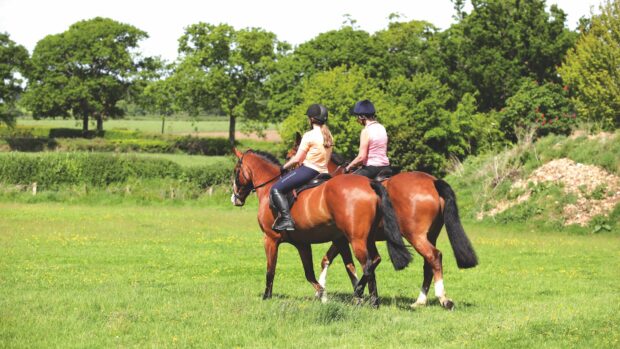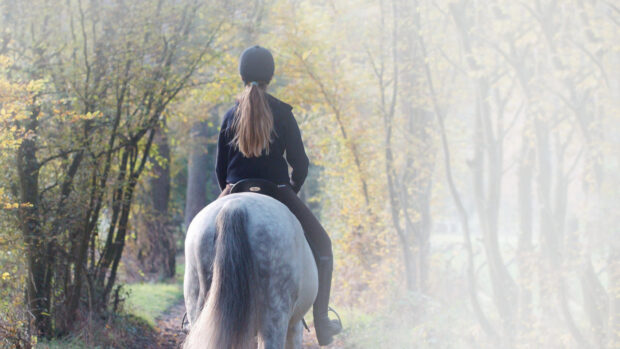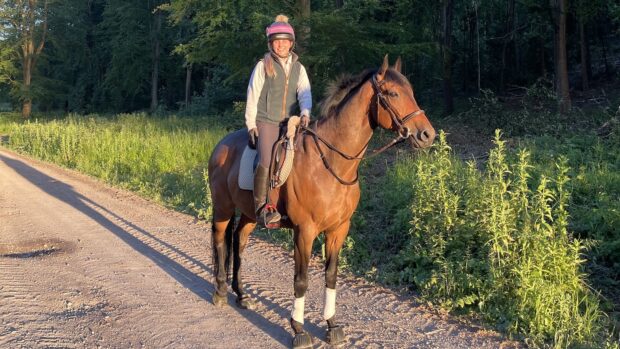PERMITS offer a “valuable” alternative way for equestrians to access more off-road riding routes – but paying for access to Forestry England-owned land has come under discussion.
Some organisations and landowners offer places to ride safely off-road for an annual or six-monthly permit. These are usually on privately owned land, Forestry England routes – where there is no access to a public right of way such as a bridleway – or Woodland Trust land. One such example is Charlton Park Estate, Wiltshire, which has recently launched a permit scheme offering access to 20km of off-road riding for £120 annually.
The British Horse Society director of access Mark Weston told H&H permits do “have a place” in respect of access provision, where free access cannot be gained by other means.
“Where there isn’t current provision of off-road riding and historical routes do not exist that can be recorded, permits are a very valuable resource for riders and carriage drivers to be able to get off the road,” he said.
“We oppose permits in respect of publicly owned land where access for other users is free. We don’t think there should be any discrimination against equestrians in respect of the provision of access to such land, and especially Forestry England forests where access is being provided free for walkers and cyclists – we believe this is discriminating against riders and carriage drivers.”
Mr Weston added that conversations are taking place between the BHS and Forestry England on the topic.
“We are currently working with Forestry England and they have undertaken that they will look at the issue of permits again,” he said.
A spokesman for Forestry England said there are 1,670 miles of public bridleways and byways used by many riders and on top of this, the organisation provides “additional access” on permissive bridleways and links to other routes.
“We use permits and permissions in a limited way for riding, because some places need them and they allow us to have access rather than stop it altogether. For example, it means we can manage the impacts of riding in areas with sensitive or protected habitats. The modest amount of money from these permits is channelled back into the woodlands we manage to help maintain trails and other facilities,” he told H&H.
“The BHS is an important stakeholder to us and we talk and meet often. We discussed the issue of permits recently and we look to work with them and other stakeholders to look at the topic of permits again.”
Julie Chantler, office manager for the Toll Rides Off-road Trust, a charitable trust based in the south-east providing permits for farm and forest routes, said that the topic of paying for access to Forestry England land continues to arise.
“Some members feel cyclists cause damage to the forest, but don’t have to pay. But from Forestry England’s perspective, I think they feel horses do more damage than bikes, and part of the reason they charge the permit is to keep the tracks clear so the riders have got the opportunity to enjoy the forest,” she said.
“I see where the BHS is coming from, though, as some of Forestry England’s land is free to ride in parts of the country, but it’s not in the south-east.”
You might also be interested in:

‘We need change’: shocking statistics from major horse road safety study

British Horse Society hits halfway point in project to save bridleways but ‘time is running out’

Subscribe to Horse & Hound magazine today – and enjoy unlimited website access all year round
Horse & Hound magazine, out every Thursday, is packed with all the latest news and reports, as well as interviews, specials, nostalgia, vet and training advice. Find how you can enjoy the magazine delivered to your door every week, plus options to upgrade your subscription to access our online service that brings you breaking news and reports as well as other benefits.



